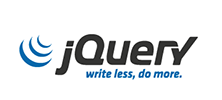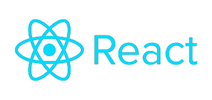What are the main hard skills for a front-end developer
August 17, 2021

Although there are different types of web developers, their common denominator is that they all participate in the source code, analysis and maintenance of the websites and systems that drive businesses and organizations. A back-end developer can build the infrastructure that allows a website to handle innovative queries, data requests and search structures, while a front-end developer focuses on the user environment and user experience, ensuring that the look and feel of the website are both intuitive and enjoyable.Thus, a front-end developer can be considered to be the bridge between design and development, creativity, attention to detail, technological knowledge, and the ability to analyze are important characteristics in the development of their projects. As companies direct their efforts towards digital, the need to hire specialists in this area has grown as well. The reason is quite simple: to have a functional, attractive and aesthetically well-organized website, to capture and maintain the interest of potential customers. The layout implemented must convey the objectives very clearly, since it will work as a visual showcase of the brand. We believe that specialized training, combined with experience, self-learning, and a constant willingness to learn, are essential tools to enhance the careers of these professionals. We will list some of the main hard skills for a front-end developer:
HTML, CSS and JavaScript

The three fundamental pillars of front-end development are HTML, CSS and JavaScript. It is these technologies that will instruct computers on how content should be displayed on devices from an aesthetic and functional point of view. Thus, each website is built through a set of interconnected instructions and languages that guide the visual experience and user interaction. HTML, HyperText Markup Language, was the only language used with the arrival of the Internet. To this day, it is still responsible for providing through its tags, the skeleton of web pages, that is, the structuring of the content of websites. CSS, Cascading Style Sheets, is used to stylize the elements written in HTML, thus applying the intended layout. In other words, HTML builds the structural basis of a website and CSS deals with its appearance, which can be defined by its multiple possible styles. JavaScript differs considerably from these two. It is a dynamic scripting language, which makes it possible to make websites interactive and dynamic. All this is possible through the manipulation of the DOM (Document Object Model), which transforms the structure of the web page into nodes and objects, thus allowing the control of these elements through JavaScript. Additionally, it is a programming language that allows interaction with Application Programming Interfaces (APIs). This capability allows front-end developers to implement complex interactions quickly and easily, thus providing an optimal user experience.
jQuery

jQuery is a popular JavaScript library that is characterized by being fast, small, cross-platform, and feature-rich. It is designed to simplify client-side scripting in HTML by making these documents cross-platform, making them have an easy-to-use API that is compatible with different browsers. Its main goal is to provide an easy way to use JavaScript on a website to make it more interactive and attractive.
Bootstrap
Inicialmente concebida para o Twitter, o Bootstrap é das ferramentas mais eficazes em open source, que se revelou ser uma das estruturas de front-end mais populares do mundo. Graças à enorme variedade de templates disponíveis, o desenvolvimento de interfaces torna-se num processo mais simples. Pode ser utilizada por qualquer pessoa com conhecimentos básicos em JavaScript, CSS and HTML, já que é uma framework relativamente fácil de aprender. Esta ferramenta ajuda o developer a implementar recursos como menus dropdown, botões, tabelas, formulários, modal, carousel, slideshow, entre muitas outras características que podem ser integradas em aplicações and websites utilizando uma única base de código.
JSON
JSON is known as JavaScript Object Notation and is a text format for storing and exchanging data. Its presence on the web has become almost inevitable in the last 15 years, as this data format is essential for any system where information needs to be transferred between its users and the website's backend. JSON is designed to be used by a wide range of programming languages and to facilitate the passage of information between users and the website, whether that data is stored or further processed.
AJAX
AJAX, Asynchronous JavaScript and XML, brings together the main front-end development technologies for communicating information between a client and a web server. It allows the browser used by the client to request the server and then allows the server to send a response without refreshing the page. Because AJAX is asynchronous, the website does not stop execution while waiting for a response from the server. Instead, it works behind the scenes to process a JavaScript request. Some of the major social media platforms, such as Facebook and Twitter, use simple AJAX-based interactions to show more content and updated information as users scroll through their feeds. A framework is therefore a template that can be used by a developer, in most online systems, as a way to organize and structure their code. We will elaborate on its importance below.
React

Seen as one of the key hard skills for a front-end developer, React is a JavaScript library that allows you to build user interfaces, and can also be used to describe or declare how you want the DOM to be changed. In this sense, the React library allows you to display dynamic data and variables. Essentially, React allows for fast, dynamic and user-friendly adaptations or reactions based on how a user interacts with the website. It can react, automatically update the DOM, and respond to user requests. It is particularly useful for developing applications that are used on the web but run like full-featured desktop programs (e.g. advanced webmail programs like Gmail or mapping software like Google Maps). Websites that offer single-page applications often rely on React for a smooth user experience and fast, seamless responses, since these are applications that load within a single web page but are continuously changing.
Angular
It is an open-source JavaScript framework from Google, based on TypeScript, which was developed specifically for the creation of dynamic web applications. With this framework, it is possible to develop front-end applications without having to resort to other plug-ins or frameworks. Angular is used to develop state-of-the-art client-side applications, especially single-page applications. It has many features that simplify the development of the applications themselves while ensuring excellent performance results.
Vue.js
Vue.js is a JavaScript framework that is used to build user interfaces. When compared to other frameworks like Angular or React, Vue.js is more accessible and does not have as big a learning curve. This framework is also modular and allows you to split your code into reusable components, each of which has its own HTML, CSS and JavaScript markup.
By now, you should have a clear notion of what are the main hard skills for a front-end developer. There is a global need to have a digital presence, and if it is through a professional website, it must be structured consistently, to enhance the expected results: to be found in search engines, to increase notoriety in the market, to expand the business and to sell more, to establish contact with the target audience.
Popular Articles
RPG/AS400: How this technology keeps up with digital advancements
Essential skills for functional analysts
The secret weapon of IT projects: How Business Analysts drive success
COBOL in 2025: Legacy or Opportunity?
Majorana 1 - A new milestone in quantum computing
The role of the Business Analyst in digital transformation
